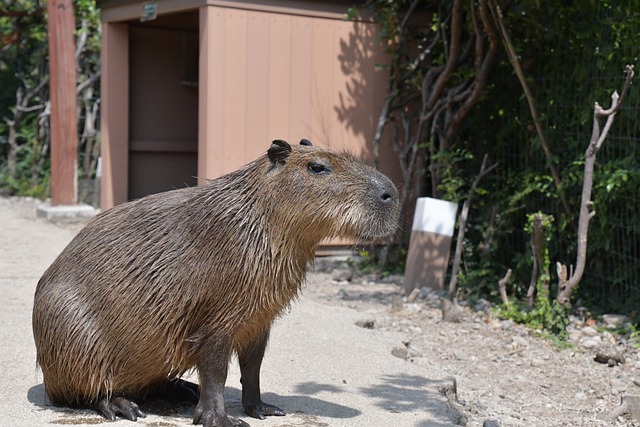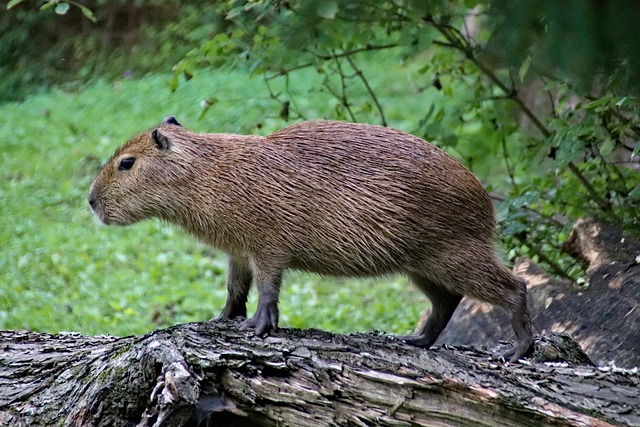Have you ever seen a squirrel raise its paw and wondered what it means? Squirrels are fascinating creatures that can communicate with each other in various ways, including through body language. One of the most common gestures squirrels make is raising their paw, which can have different meanings depending on the context.
When a squirrel raises its paw, it could be a sign of aggression, warning others to stay away from their territory or food source. On the other hand, it could also be a sign of submission, indicating that the squirrel is not a threat and is willing to back down. In some cases, squirrels may also raise their paw to communicate with other squirrels or to get the attention of humans.
Understanding the body language of squirrels can help you better appreciate these creatures and avoid potential conflicts. In this article, we will explore the different meanings behind a squirrel raising its paw and what you can do to respond appropriately. So, whether you are a nature enthusiast or curious about these furry creatures, read on to learn more about this fascinating behavior.
Squirrel Behavior
Paw Raising Behavior
One of the most commonly observed behaviors in squirrels is paw raising. This behavior is typically seen when a squirrel feels threatened or tries to communicate with other squirrels. When a squirrel raises its paw, it is often a sign of warning or aggression.
Squirrels may raise their paw in response to a perceived threat, such as the presence of a predator or a human approaching too closely. Raising its paw, the squirrel may be trying to warn the perceived threat to stay away or back off.
However, paw raising can also be a form of communication between squirrels. When two squirrels encounter each other, they may engage in paw raises and other behaviors to establish dominance or communicate their intentions.
It is important to note that not all paw-raising behavior is aggressive or threatening. Squirrels may also raise their paws to get attention or express excitement. For example, a squirrel may raise its paw when it sees a potential food source or is playing with other squirrels.
Overall, paw raising is a typical and vital behavior in squirrels. By understanding what it means and when it occurs, we can better appreciate these fascinating creatures and learn to coexist with them in our neighborhoods and parks.
Possible Explanations
There are several reasons why a squirrel might raise its paw. Here are some possible explanations:
Communication
One of the reasons squirrels raise their paws is to communicate with other squirrels. They use their paws to signal other squirrels about potential danger or establish dominance. For example, if a squirrel sees a predator, it might raise its paw to warn other squirrels. Similarly, if two squirrels fight over food or territory, they might raise their paws to establish dominance.
Defense Mechanism
Another reason squirrels raise their paws is as a defense mechanism. When they feel threatened, squirrels often stand on their hind legs and raise their front paws to make themselves look bigger and more intimidating. This behavior is often seen when squirrels face predators or other perceived threats.
Attention Seeking
Squirrels are naturally curious and social animals, sometimes raising their paws to get attention. This behavior is often seen in urban areas where squirrels have become accustomed to humans and may even be fed by them. In these cases, squirrels might raise their paws to ask for food or get a better look at what’s happening around them.
Conclusion
After exploring the various reasons why a squirrel might raise its paw, it is clear that this behavior does not always indicate the same thing. While it may be a sign of aggression or warning in some cases, it can also be a way for the squirrel to communicate with others or to express fear or anxiety.
Observing a squirrel’s body language and behavior can provide more clues about what they are trying to communicate. For example, if a squirrel is making a chattering noise while raising its paw, it may be trying to warn others of danger in the area.
It is important to remember that squirrels are wild animals and should be treated cautiously and respectfully. If you encounter a squirrel raising its paw, giving it space and observing from a safe distance is best. Attempting to interact with the squirrel or approach it could injure the squirrel and the human.








